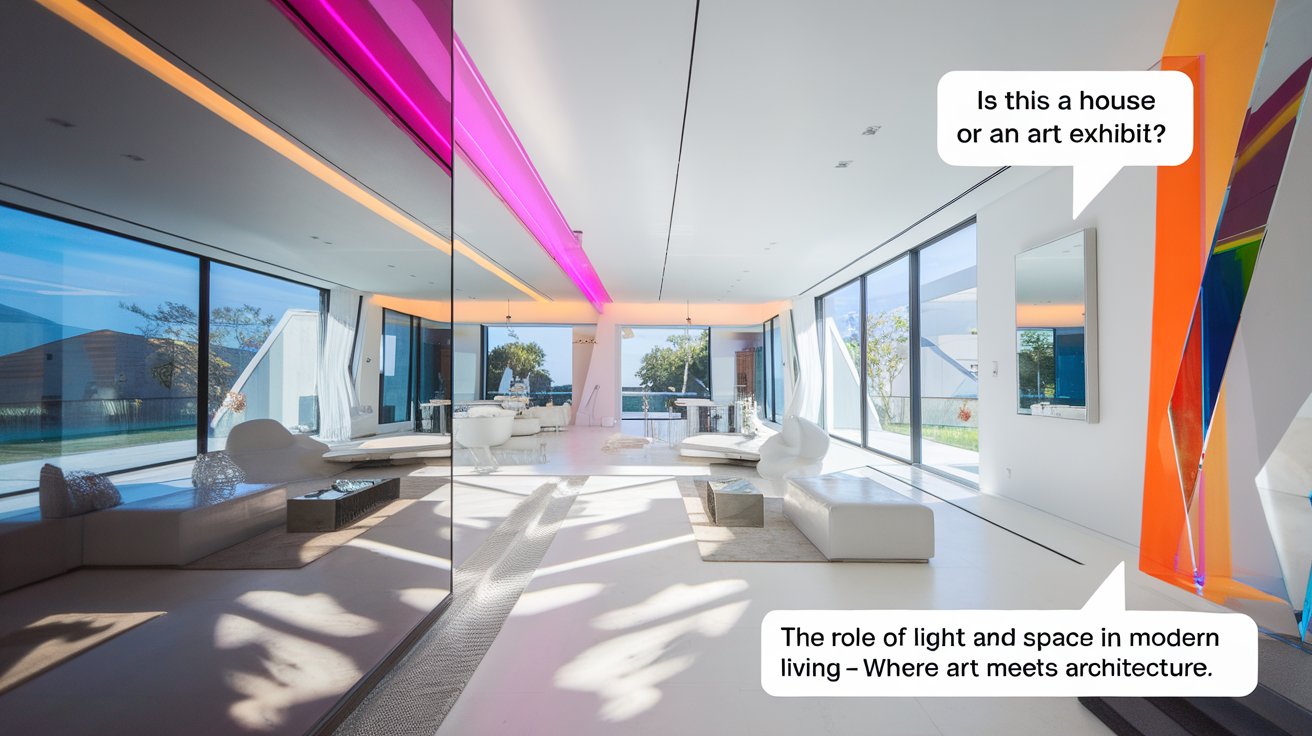- Small File Holders Letter Organizer
- Metal Mesh Document/Filing/Folders/Paper Organizer
- Desktop
Introduction
Deciding between urban and suburban living is a pivotal choice for homeowners, as it shapes daily life, budget priorities, and future opportunities. Urban areas are often characterized by their bustle of city life, proximity to job opportunities, and vibrant entertainment options, while suburban settings offer spacious homes, family-friendly neighborhoods, and access to green spaces. Understanding the pros and cons of each lifestyle can help individuals make a more informed decision about where to settle.
By examining factors such as cost of living, public transportation, and the real estate market, potential buyers can align their housing choices with their personal and financial goals. Whether prioritizing the vibrancy of urban centers or the tranquility of suburban areas, thoughtful consideration ensures homeowners find the perfect fit for their needs.
Key Takeaways
- Urban areas provide unmatched access to job opportunities and vibrant cultural attractions.
- Suburban living offers spacious homes, family-friendly neighborhoods, and greater tranquility.
- The cost of living and real estate market dynamics differ significantly between urban and suburban settings.
- Public transportation and commute times are critical factors to consider when choosing where to live.
- Urban living excels in convenience and vibrancy, while suburban areas prioritize space and privacy.
- Thoughtful evaluation of personal goals ensures homeowners make a more informed decision.
Understanding Suburban Living: Key Factors for Homeowners
Suburban living offers a unique blend of tranquility and accessibility, appealing to many homeowners. With larger homes, family-friendly neighborhoods, and proximity to good schools, suburbs provide a strong sense of community. The availability of spacious living spaces and access to green spaces often outweigh the challenges of a longer commute. Suburbs typically offer affordable housing options compared to densely populated urban areas, making them attractive for families and individuals seeking more value for their money. While the lifestyle is quieter than the bustle of city life, it provides essential amenities like shopping centers and parks. As suburban homes continue to attract buyers, understanding the nuances of these areas becomes crucial for making an informed decision.

The Appeal of Family-Friendly Suburban Neighborhoods
Suburban neighborhoods often stand out for their family-friendly environments. These areas are designed with families in mind, offering amenities like good schools, playgrounds, and parks. The strong sense of community found in suburban settings fosters connections among neighbors, making them ideal for families with children. Additionally, the lower density of homes provides more privacy, while quieter streets create safer spaces for outdoor activities. This combination of features makes suburban living a desirable choice for those prioritizing safety and quality of life.
How Suburban Living Spaces Enhance Quality of Life
The spacious homes and green spaces commonly found in suburban areas significantly enhance the quality of life for residents. With larger yards and more living space, suburban homes provide the opportunity for outdoor activities, gardening, or simply relaxing in nature. Unlike the bustle of city life, the suburban atmosphere is quieter and more laid-back, contributing to a sense of peace and well-being. This environment encourages a healthier, balanced lifestyle that appeals to those looking to escape the fast pace of urban living.
Essential Features of Suburban Living
1. Strong Sense of Community
Suburban neighborhoods often foster a close-knit community atmosphere, where neighbors interact and support each other. This makes them appealing for families with children and individuals looking for a sense of belonging.
2. Family-Friendly Amenities
Suburbs typically offer a wide range of amenities such as good schools, playgrounds, and parks, creating an ideal environment for raising children and enjoying outdoor activities.
3. More Affordable Housing Options
Compared to urban areas, suburban settings frequently provide affordable housing options, offering better value for money with spacious living spaces and larger properties.
4. Peaceful and Quiet Environment
The tranquil ambiance of suburban areas offers a welcome escape from the bustle of city life, with quieter streets and less congestion.
5. Access to Green Spaces
Suburban homes often come with access to green spaces, allowing for outdoor activities, gardening, and a healthier lifestyle.
6. Larger Living Spaces
Suburban homes typically offer more per square foot, making them suitable for families or individuals who prioritize space and privacy.

Urban vs Suburban: Weighing the Pros and Cons of Each Lifestyle
Choosing between urban and suburban living involves balancing lifestyle preferences with practical considerations. Urban areas offer job opportunities, vibrant nightlife, and proximity to cultural attractions. However, they often come with a higher cost of living and limited green space. Suburbs, on the other hand, feature spacious homes, a quieter ambiance, and a focus on family-friendly environments. The pros and cons of both settings vary depending on personal priorities, such as the need for public transportation, access to amenities, or the desire for a quieter lifestyle. By analyzing the differences, individuals can better align their choices with their long-term goals.

Urban Centers: Advantages and Challenges for Modern Living
Living in urban centers comes with its share of advantages and challenges. On the positive side, residents enjoy access to a diverse range of cultural attractions, vibrant nightlife, and extensive job opportunities. However, the trade-offs include a higher cost of living, smaller living spaces, and limited access to green spaces. Urban life often requires adjustments to a faster pace, with fewer opportunities for privacy. For those seeking excitement and convenience, however, urban centers remain an unmatched choice.
Suburban Serenity: Is It Worth the Longer Commute?
While suburbs offer tranquility and spacious living, the longer commute to work or urban hubs is a significant consideration. Many residents find the trade-off worthwhile, as suburban areas provide a quieter, more relaxed lifestyle. The ability to own a single-family home and enjoy affordable housing options often outweighs the inconvenience of added travel time. Evaluating personal priorities, such as work-life balance and access to amenities, is key to determining whether suburban serenity is worth the commute.
Case Study: How Suburban Living Enhanced a Family’s Quality of Life
John and Lisa, a young couple with two children, were living in a bustling urban center. While they enjoyed the vibrant nightlife and proximity to their workplaces, they struggled with the higher cost of living and limited green space. As their family grew, they decided to move to a suburban neighborhood.
Their new home offered significantly more living space, including a backyard for their kids to play. The neighborhood’s good schools and community parks were a major draw. Although John’s commute to work became longer, the tranquility of the quieter streets and the ability to own a single-family home outweighed the inconvenience. Over time, the family developed a stronger sense of community and enjoyed a healthier, more balanced lifestyle. This transition highlights how suburban living can cater to the needs of growing families while enhancing overall quality of life.
Exploring the Real Estate Market: Trends in Suburban and Urban Housing
The real estate market is a dynamic space influenced by population shifts, economic trends, and buyer preferences. Suburban areas are gaining attention for their affordable housing options and increasing demand for single-family homes. Conversely, urban real estate continues to attract those valuing proximity to job opportunities and the bustle of city life. Market fluctuations highlight a growing interest in suburban settings, driven by the desire for spacious living and a strong sense of community. Comparing the price per square foot and understanding market trajectories can empower homeowners to make smarter investments.

Suburban Real Estate: The Rising Demand for Spacious Homes
The demand for spacious homes in suburban areas continues to grow as buyers seek more living space and privacy. Suburban real estate markets are characterized by affordable housing options and increasing interest from families and individuals alike. Features such as larger homes, proximity to good schools, and the appeal of green spaces make suburban areas a popular choice. Understanding these trends can help potential buyers make smarter investments and secure properties in desirable locations.
Urban Housing Trends: Balancing Cost and Accessibility
Urban housing markets remain competitive due to their proximity to job opportunities and cultural attractions. However, challenges like higher price tags and limited space require careful consideration. Many buyers prioritize convenience and accessibility over size, opting for properties in densely populated areas. Observing market patterns, such as rental property demands and shifts in real estate prices, can guide better purchasing decisions and maximize returns on urban investments.
Suburban living offers a unique combination of tranquility and community, providing families with the space and environment they need to thrive. — Jane Jacobs, urbanist and author
Beyond the Outskirts: How to Choose the Ideal Home for Your Needs
Finding the perfect home means considering more than just location. Whether in urban centers or the outskirts, factors such as cost of living, proximity to entertainment options, and the need for a longer commute play vital roles. Suburban areas provide a balance of spacious homes and affordable living, while urban areas excel in convenience and vibrancy. Homebuyers must weigh their priorities—whether they value family-friendly environments or the fast-paced energy of city living. Careful evaluation ensures that the decision aligns with both immediate needs and future aspirations.

Essential Factors in Selecting Your Dream Home
Choosing the right home involves evaluating several critical factors, including cost of living, proximity to work, and lifestyle preferences. Whether you prioritize the amenities of urban areas or the spacious living of the suburbs, identifying your goals is key. Families may lean toward family-friendly neighborhoods, while professionals may focus on shorter commutes and access to job opportunities. A clear understanding of your priorities ensures a well-informed and satisfying decision.
Urban and Suburban Options: Aligning Choices with Lifestyle Goals
Your choice between urban and suburban areas should align with your long-term lifestyle goals. Urban living offers the energy and convenience of city centers, while suburban areas provide peace and space for personal growth. Considerations like public transportation, entertainment needs, and desired levels of privacy can significantly influence your decision. Balancing these factors ensures your home complements both your daily life and future aspirations.
Conclusion
Choosing between urban and suburban living is more than just a lifestyle decision; it’s about finding a home that aligns with your values, priorities, and long-term goals. Urban areas offer unmatched access to job opportunities, cultural attractions, and the dynamic energy of the city, while suburban neighborhoods provide the comfort of spacious homes, family-friendly environments, and a stronger connection to green spaces. Each option presents unique benefits and challenges that resonate differently depending on individual needs.
By analyzing factors such as cost of living, real estate prices, and proximity to amenities, homeowners can navigate the decision-making process with confidence. Whether you’re drawn to the bustle of city life or the peace of suburban serenity, the key lies in balancing convenience, affordability, and lifestyle aspirations to secure a home that truly fits your future.




